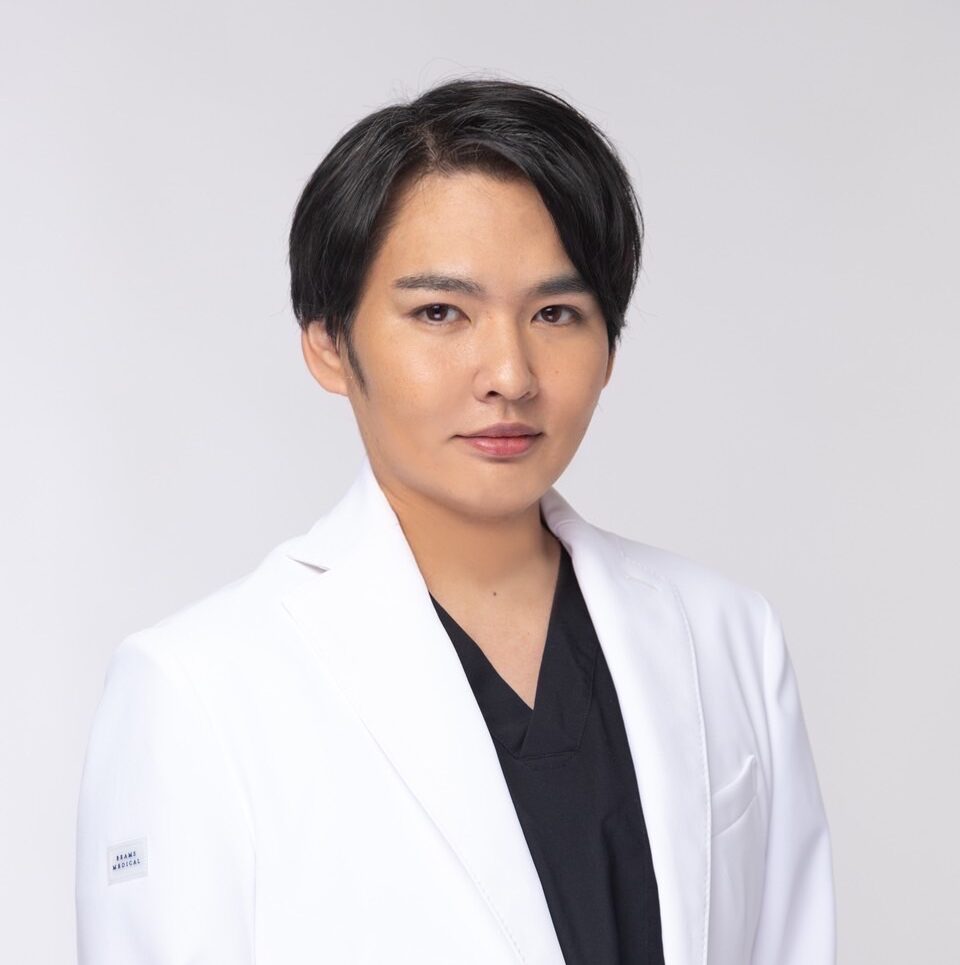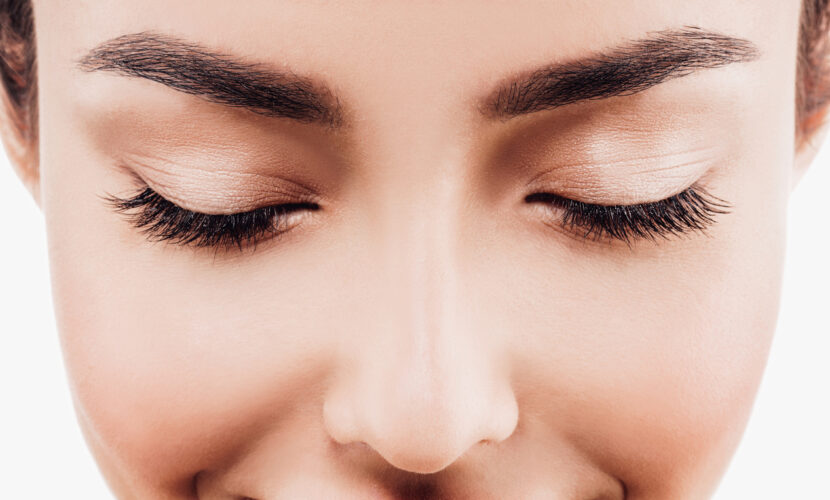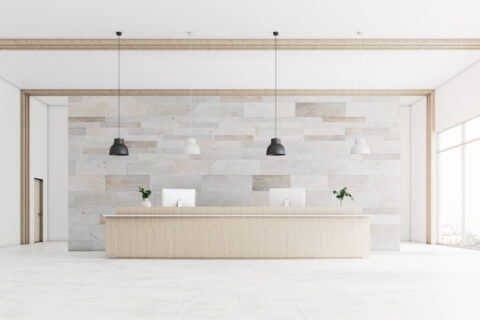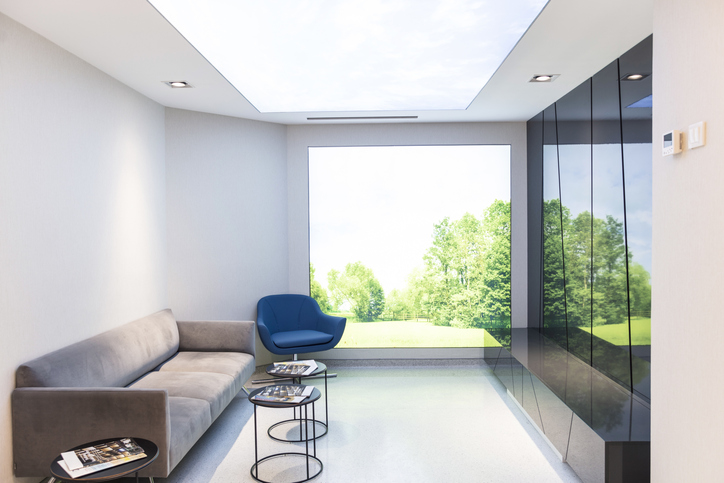Worried about the widening of the nose, or want to have a cleaner profile. For these reasons, more and more people are considering nose reduction. On the other hand, however, many people are concerned about what will happen if they are exposed to the possibility of plastic surgery. Among cosmetic procedures, the impression of the nose affects the entire face, so even a slight discomfort is easily noticed by those around you.
In fact, we have heard stories of people being "exposed" due to postoperative swelling and scars, but there is always a reason for these problems. Here, we will carefully explain the specific points to realize a nose reduction that is less likely to be discovered, based on medical knowledge and the latest surgical techniques. This is a must-read for all those who wish to change their appearance naturally and beautifully without being noticed.

Graduated from the Faculty of Medicine, National Kumamoto University. After serving as the director of major beauty clinics in Japan, etc., he opened Aladdin Aesthetic Clinic in 2023. He is a professional in aesthetic medicine with a doctorate in anti-aging research and many years of experience. With the motto of "Toward the realization of cosmetic medicine without lies," he aims to be the "Only One" together with his patients.
- Can a nose reduction be discovered? What are the three main factors that make it more likely to be discovered?
- How to choose a procedure for nose reduction to avoid detection? Explaining the differences between each
- Closed method|Aiming for natural changes without showing scars.
- External method (open method)
- Internal/external method (combined method)|Recommended for those who want to improve the accuracy of the finished product.
- Flap method (FLAP method)|Advanced technology to minimize the risk of backsliding by tissue transfer
- Which one is right for you in the end?
- What are the conditions for a natural looking nose reduction change? Understanding the criteria for an undetectable result
- People who do not want to be exposed to nose reduction should focus on this! Points to consider when choosing a clinic
- How to spend and make it through the downtime of a nose reduction without getting caught.
- summary
Can a nose reduction be discovered? What are the three main factors that make it more likely to be discovered?
When considering nose reduction, many people's first concern is whether or not they will be noticed. Although cosmetic treatments are becoming more common, it is still desirable to avoid being noticed by those close to you.
So why are there cases of people being exposed after the procedure? There are three major factors involved in this situation.
Location and prominence of scars
The most obvious factor is the location and prominence of the scar. There are two main types of nose reduction: "medial" and "lateral," and as the name implies, the scarring depends on where the incision is made. The lateral method, in particular, involves making an incision on the outside of the nose (around the base of the nose), so redness and scarring are easily visible for some time after the surgery and may remind the patient of a plastic surgery.
However, the lateral method is a very effective technique for those who have a large amount of change, and for those who have a strong original nasal overhang or a large left-right difference. If the indications are not mistaken, a natural-looking result can be expected even with the lateral method. What is important is that the doctor accurately determines "which technique is appropriate" and carefully sutures the nose so that the scar will not be noticeable.
Effects of postoperative swelling and internal bleeding
Another risk of being "exposed" is postoperative swelling and internal bleeding. Immediately after the surgery, the skin and mucous membranes are damaged, and in some cases, swelling and redness may be strong. If you force yourself to go out in this state, there is a high possibility that people around you will feel uncomfortable, as they will not be able to hide it with a mask or makeup.
Particular attention should be paid to the external method, as the risk of internal bleeding spreading subcutaneously increases as the scalpel enters the skin, and recovery may also take time. Since the length of downtime and the degree of symptoms vary depending on one's constitution, age, and lifestyle, the viewpoint of "how to spend the downtime" is also very important in order to avoid being exposed.
Discomfort due to unnatural changes
The third factor is the "finished product's discomfort. The shape of the nose is an element that influences the overall impression of the face, and even a change of just a few millimeters can cause a sense of discomfort. In particular, excessive removal of the nose can result in an imbalance that may look "unnatural" to some viewers.
The moment when plastic surgery is revealed is often triggered by an intuitive impression, such as "I feel something strange" or "I feel that my impression has changed from before," rather than by any actual "evidence that I have undergone plastic surgery. Therefore, the stronger the desire for change, the more prudence is required in this procedure.
How to choose a procedure for nose reduction to avoid detection? Explaining the differences between each
In the previous chapter, we focused on "discomfort" caused by scarring, swelling, and unnatural results as the main factors that can lead to nose reduction being discovered. In reality, however, those risks are largely dependent on the choice of surgical technique.
| surgical technique | Scar visibility | Approximate downtime | variation | Risk of Backtracking | resistance to detection |
|---|---|---|---|---|---|
| inside measure | Almost invisible | About 3 to 7 days | Elementary - Middle | rare | high |
| external method | And stand out. | 2 to 3 weeks | large (e.g. serving size) | few | during (a certain time when one did or is doing something) |
| inside/outside method | Can be somewhat conspicuous. | 2 to 3 weeks | large (e.g. serving size) | few | Middle to High |
| flap method | Very low visibility | About 1 to 2 weeks | Medium to large | Extremely little. | high |
(*Effectiveness and recovery period may vary from person to person. Final judgment should be made through consultation with a physician.)
There are multiple procedures available for nose reduction, each with its own advantages and disadvantages. Selecting the most appropriate technique in terms of appearance change, downtime, and ease of detection will lead to natural-looking results and peace of mind. Let's take a closer look at four typical techniques.
Closed method|Aiming for natural changes without showing scars.
The medial method is a procedure in which incisions are made from the inside of the nostrils, and is characterized by the fact that it leaves no external scars. Swelling and internal bleeding are relatively light, and in many cases settle down within a few days to a week, making it a very reassuring procedure for those who are "too anxious about being exposed" to take the plunge.
However, there is a limit to the extent of excision, and it may not be suitable for cases where drastic changes are desired. Furthermore, because the changes are mild, there is a risk of slight regression over time if adhesion between the skin and internal tissues is inadequate. Therefore, it is important to determine the indications before making a choice.
External method (open method)
The lateral method directly makes an incision around the base of the nose, which is effective for patients with a large amount of change and a strong overhang or roundness of the nose. Especially in cases where the outside of the nose is widened, the lateral method can be used to achieve a well-balanced result.
On the other hand, because incisions are made on the skin surface, redness and scars may be visible for some time after the surgery. Swelling and internal bleeding also tend to be more pronounced, and it is safe to expect 2-3 weeks of downtime. However, in recent years, thanks to advances in suturing techniques and aftercare, scars are often barely noticeable after six months to a year.
Internal/external method (combined method)|Recommended for those who want to improve the accuracy of the finished product.
This "inside-outside" method combines the advantages of both the inside and outside methods. By approaching from both the inside and outside, it is possible to adjust both the width and overhang of the nose at the same time. The medial and lateral methods are often chosen for patients who have a large difference between the left and right sides of the nose, or when fine adjustments are needed to correct the shape of the nose.
However, since there are multiple incision sites, there may be more swelling and redness, and the downtime tends to be somewhat longer. In addition, scar management and care must be more careful, so it is preferable to have the procedure performed at a time when there is more time to live after the surgery.
Flap method (FLAP method)|Advanced technology to minimize the risk of backsliding by tissue transfer
The flap method is a highly specialized technique that requires advanced skills, as it is a method of shaping the skin and soft tissues by moving them rather than excising them. It is a highly specialized technique that requires a high level of skill. Because changes can be made without making incisions in the visible area, the scar is sometimes regarded as being as visible as, or even more visible than, the medial method.
Another major advantage is that it uses "adhesion" of the skin to stabilize the change, making it less likely to revert. However, the number of doctors and clinics that can perform the procedure is limited, and the cost tends to be high. Therefore, it is suitable for cases where the desired result is difficult to achieve with other techniques, or where the patient was not satisfied with previous procedures.
Which one is right for you in the end?
Which technique is the "right" one depends on various conditions, such as facial features, nose shape, the degree of change desired, and lifestyle. The most important choice is to find a doctor who is willing to face your desire for a "natural look" and "undetectable" nose job.
The first step in an undetectable plastic surgery procedure is not merely to compare techniques, but to meet with a doctor who will properly share your own ideals and reality and make a proposal that you will be satisfied with. We hope that everyone who is considering nose reduction can make a "safe choice".
What are the conditions for a natural looking nose reduction change? Understanding the criteria for an undetectable result
In the previous chapter, we explained the differences and characteristics of each surgical technique for nose reduction. However, no matter how technically superior the technique chosen, it is not the only way to achieve a "natural-looking result. Rather, in order to achieve a natural change that is not obvious to those around you, it is extremely important to determine the balance with the face as a whole and the finished product.
In this section, we will explain from aesthetic and practical perspectives why some procedures are obvious and what should be judged as "natural".
Harmony with the overall balance of the face is key.
Beauty is not an accumulation of partial ideals. The nose, in particular, is located at the center of the face, and its impression is determined by its relative balance with the surrounding elements such as the eyes, mouth, and contours.
If only the nose is extremely reduced in size, the eyes may look too large, or the distance between the nose and the mouth may look unnatural, which may be perceived by others as "discomfort. In other words, whether or not the nose reduction is noticeable is not a matter of whether the nose is smaller, but rather whether it blends in with the face.
In this regard, the doctor's aesthetic sense and design ability, as well as close dialogue with the practitioner, are very important. The accuracy of the finished product will vary greatly if you verbalize and share your ideal image of what kind of atmosphere you would like to achieve.
Judgment to avoid extreme changes
Such feelings as "If I'm going to do it anyway, I want to make a big change," are not wrong. However, we should be aware of the fact that most of the causes of plastic surgery being discovered are cases where the control of the amount of change is mismanaged.
Nose reduction is a procedure in which a change of a few millimeters can make a big difference in the impression. That is why the aesthetics of "subtraction" rather than "addition" is required in this field. The changes that are a little insufficient are evaluated as "natural" and do not create a sense of discomfort in the surrounding environment.
During the consultation with the doctor, be sure to share simulated images and images of the finished product before the surgery. The time spent calmly discussing "how natural the changes will look," including post-operative downtime and progress, will greatly affect the degree of satisfaction with the procedure.
Finish checkpoints" after downtime
It is considered appropriate to check the naturalness of the nose reduction approximately one month after the surgery, rather than immediately after the surgery. This is because swelling and internal bleeding will mostly subside in about one month, although it varies from person to person.
At that point, the following points can be checked to facilitate postoperative evaluation
- Is there a sense of unity between the nose, eyes, mouth, and face line?
- Is the shape of the nose smooth and well-defined?
- When you move your face, does only the nose look like it is floating?
- Are there any unnatural movements during conversation or when smiling?
In addition, since it often takes several more months for the scar to become completely invisible, it is advisable to consult with the doctor while monitoring the progress and, if necessary, consider a second visit or consultation for revision.
Co-creation with the physician is necessary for natural-looking results!
Cosmetic medicine is not an act in which the patient simply "gets it done. It is no exaggeration to say that especially in the case of nose reduction, where the emphasis is on naturalness, the process can only be completed through collaboration and dialogue with the physician.
It is not a question of "where and how much to change," but rather, "how can I make changes that will not be noticed by others, but will secretly make only me happy? Counseling and planning from this perspective is the key to success. The undetectable result is not a coincidence, but a beautiful answer based on prior strategy and calculation.
People who do not want to be exposed to nose reduction should focus on this! Points to consider when choosing a clinic
In the previous chapter, we told you that in order for nose reduction to look natural, it is important to find the right balance with the face as a whole and the right amount of change. However, no matter how much you understand the theory, it is meaningless if you cannot find a doctor or clinic that can actually give it shape.
| checkpoint | Example of confirmation method |
|---|---|
| Are there many cases of natural variation? | Visual case photos and post-operative comparisons to confirm |
| Careful counseling? | Be careful not to talk one way or the other. |
| Is the reason for the selection of the technique clear? | See if other options are presented. |
| Is there a simulation | Check for predictive images and explanations after the treatment. |
| Is there an aftercare system in place? | Confirmation of acceptance of re-consultation/consultation |
The key to eliminating the fear of "what if I get caught with a nose reduction?" is to find a doctor who cares about the naturalness of the finished product. The first step to a successful nose job is to find a partner who is willing to work with you to find beauty that is realistic and not overly hopeful.
Cosmetic medicine is both medicine itself and design. Choices based on trust and acceptance lead to results that are unnoticeable to others, yet bring about a certain confidence.
Here we will explain specifically what to look for to avoid mistakes and how to choose a reliable doctor/clinic.
How do I identify a doctor who specializes in "natural variation?"
The most important thing in plastic surgery is not the technique itself, but the sensitivity to determine "how much to change and how much not to change. In other words, the key is whether the doctor himself is good at "not adding too much.
When looking at case photos, it is important to pay attention not only to "dramatic before-and-after" cases, but also to cases that are not obvious at first glance but give the impression of refinement. Doctors who have many such cases are more likely to have a delicate sense of balance that produces natural changes.
Also, pay attention to the physician's choice of words. Be wary of a doctor who uses phrases such as "you can change" or "you can become a different person" without warning. A truly trustworthy doctor will carefully explain the risks and limitations of the procedure with an eye toward realistic results.
Questions to check during counseling
In order to find a good doctor, it is important not to be overly passive, but to be proactive and ask questions at the consultation. The following are typical questions that a person seeking natural nose reduction should ask during a consultation.
- What are the reasons for choosing this technique? What are the differences when compared to other methods?
- How long is the downtime? How much scarring will there be?
- How much change is natural for my facial balance?
- What is the assumed condition of the patient one month, three months, and six months after surgery?
- Is simulation possible? How accurate is it?
One measure of a doctor's reliability is whether he or she can provide clear and convincing explanations in response to such questions.
Reasons for choosing a clinic with a large number of cases and a proven track record
In addition to the individual skill of the physician, it is also very important to note how much the clinic itself focuses on rhinoplasty. In fact, nasal reduction is sometimes considered a relatively minor nasal procedure, and many medical institutions have a varying number of cases.
If you know "how many cases they handle per year" from their official website, SNS, word of mouth, etc., you can get a more objective picture of the clinic's trustworthiness.
Also, the post-operative follow-up system and ease of revisiting the clinic are also important to check. The final sense of security depends on whether or not the clinic provides an environment where "you can feel free to consult with the doctor if you have any concerns after the surgery" and "the doctor will follow up with you for follow-up visits if necessary.
How to spend and make it through the downtime of a nose reduction without getting caught.
No matter how skilled the doctor you choose, whether or not your surgery will be "discovered" depends largely on how you spend your time after the procedure. In particular, nose reduction surgery, which involves taking a scalpel to the nose, the central part of the face, is prone to postoperative swelling and redness, and the way the downtime is handled directly affects how "undetectable" the surgery will be.
Here we take a realistic view of "how to get through" the post-operative period of nose reduction, with specific tips on how to live and cover up for a natural recovery without being noticed. We will also provide tips on how to stay safe, including the differences between different surgical techniques and the approximate number of days required.
When will the swelling and redness go down after the surgery?
The length of downtime varies greatly depending on the procedure, body type, and age, but general guidelines are as follows.
- Medial method (closed method): Swelling and redness are relatively light, and in many cases become less noticeable in 3 to 7 days.
- External method (open method): Incisions are made on the skin surface, and redness and internal bleeding may remain for 7-14 days.
- Combination and flap methods: Depending on the surgical technique and body type, some swelling and discomfort may persist beyond 1 to 2 weeks.
Swelling generally peaks within 48 hours after surgery and then gradually subsides. However, it is important to be prepared not to panic over temporary changes, as some people may experience a bumpy process, such as "the swelling goes down, but then it lightly swells up again.
Lifestyle habits and precautions to reduce exposure
During downtime, it is not just a matter of sitting back and waiting for recovery; the lifestyle itself is key to aiding recovery.
- Drink enough water to facilitate the elimination of waste in the body.
- On the day of treatment, sleep with the pillow raised and face slightly elevated.
- Avoid activities that promote blood circulation too much (long baths, alcohol consumption, strenuous exercise) for 3-5 days after surgery.
These are all actions to "reduce and shorten swelling," resulting in a postoperative course that is less noticeable.
How to cover up naturally with masks and makeup
Today, the wearing of masks is well established in society, making it easier to spend downtime after nose reduction. Nevertheless, natural camouflage utilizing makeup is also an important option, rather than relying solely on masks.
- Makeup can be applied 3 to 5 days after the surgery, once the doctor's permission is granted.
- To conceal redness, use a green control color as a base
- Choose a mineral-based powder foundation that is thinner and more easily blended than a liquid foundation to reduce the burden on the skin.
- The key is to use a concealer that is not too hard, but soft and extendable, in small dots and small amounts.
- On days when make-up cannot conceal the face, it is effective to use a hat or glasses to disperse the impression.
Especially during the period when scars are noticeable depending on the light and angles, it is important to make them look natural and subtractive.
Beyond Natural Recovery, "Real Change"
The term "downtime" is often associated with the negative image of a "period of inconvenience. However, that period of time is an important process that allows the body to adjust to the changes and create a natural look. Because of the desire not to be noticed by others, how you spend your time after the procedure is as important as the procedure itself.
The changes achieved with nose reduction are never completed overnight. The real beauty lies in the careful process of swelling going down, redness subsiding, and gradually blending in with the face.
summary
Nose reduction is not an "easily noticed" procedure. It is possible to achieve a natural-looking result without being noticed by others, depending on the choice of procedure, the skill of the doctor, and how the patient spends his or her time after the surgery.
In particular, if you choose the medial method, you will have the advantage of less visible scarring and a relatively easy time during downtime. The most important part, however, is the consultation before undergoing the procedure. The shortest way to achieve an undetectable result is to discuss with the doctor the extent of change that looks most natural to you, while assessing the shape of your nose and the balance of your face as a whole.
Instead of embarking on a procedure with any lingering anxiety, let's get closer to your ideal self through careful consultation and solid choices.
At Aladdin Aesthetic Clinic, based on our many years of experience in cosmetic medicine and cosmetic dermatology and the knowledge of our doctoral degree, we provide counseling that aims to be "only one", offering the best treatment for each person we meet. We offer only the necessary treatments without any unnecessary information or suggestions.
Feel free to use our official LINE account for 24-hour counseling and reservations. Please feel free to contact us for free counseling for the first time or if you have any concerns.






